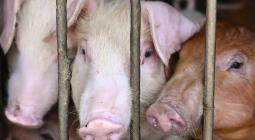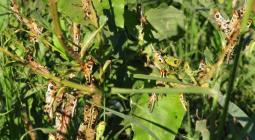Jamaica’s dengue fever outbreak shows the deadly effects of record heat

The global failure to reduce fossil fuels is leaving small island states trapped in a constant cycle of fightback against disease and extreme weather
Jamaica’s dengue fever outbreak shows the deadly effects of record heat
Georgiana Gordon-Strachan
The global failure to reduce fossil fuels is leaving small island states trapped in a constant cycle of fightback against disease and extreme weather
Read more: Health of billions at risk from global heating, warns report
In the summer of 2023, the world recorded the highest temperature in 100,000 years. All continents were affected and even the gentle breeze often felt in the tropics did little to cool the sweltering heat experienced by small island developing states (Sids). Our latest Lancet Countdown report, tracking the connections between health and the climate crisis, showed that Sids experienced 103 health-threatening heat days each year between 2018 and 2022 – equating to almost a third of the year being above the threshold whereby heat-related deaths are likely to increase.
Aside from the direct dangers of exposure to health-threatening heat such as heat stress, heatstroke, and, in severe circumstances, death, increased heat improves the climate suitability for the spread of infectious diseases such as dengue fever, malaria and vibrio by expanding their climatic boundaries, our most recent data shows. Our mathematical models of dengue fever show an increase in the frequency of outbreaks with an increase in heat, and the evidence suggests that the climate crisis has exacerbated the frequency of these outbreaks.
Dengue fever is a climate-sensitive disease that is spread through the saliva of an infected female Aedes mosquito when it bites an uninfected person. Dengue fever presents with high fever, severe headache, flu-like symptoms, intense joint and muscle pain, and other flu-like symptoms. It is usually a mild disease that can be adequately treated with rest, hydration and acetaminophen/paracetamol.
However, it can also be severe, requiring hospitalisation and, in rare cases, causing death. Its most severe form is dengue haemorrhagic fever. The virus has four strains: Denv-1, Denv-2, Denv-3, and Denv-4. These strains are distinct, and immunity to one does not provide protection from the others. Denv-2 is the most severe strain. Exposure to one strain after being infected with another increases the severity of the disease, and repeated infection increases the risk of acquiring dengue haemorrhagic fever.
Before 2007, the frequency of dengue outbreaks in Jamaica was once every 10 years; after 2007, the frequency increased to one every three to four years. The last epidemic was in 2019. While other risk factors such as behaviour and environment are implicated in the spread of dengue, the climate crisis is believed to be a significant contributor to the frequency of outbreaks, with the increase in temperature being the primary reason.
The Jamaican summer of 2023 provided the perfect conditions for an increase in mosquito proliferation. First, there was a drought, which led to an increase in the storage of water, often in containers ideal for mosquito breeding. The drought was followed by a record-breaking hot and dry summer that ended with rain. Added to the mix is hyperendemnicity, with all four dengue strains circulating.
In September 2023, Jamaica’s ministry of health and wellness declared a dengue fever outbreak. The number of cases reported by health officials as of 6 November was 3,147 (suspected, presumed and tested), with nine deaths, adding pressure on the island’s already burdened health system.
The dominant strain in circulation was Denv-2, and the hospitalisation rate was 72 people a week. Children aged between five and 14 were the most affected, with 360 cases per 100,000 people. Children were disproportionately affected because the last dengue outbreak with Denv-2 as the dominant strain occurred in 2010; these children were born after 2010 and did not acquire immunity to Denv-2. The outbreak is ongoing.
Small island states often feel as if we are in a constant state of recovery from the impacts of the climate crisis. Recovery from extreme weather events, such as tropical cyclones; recovery from disease outbreaks exacerbated by climate change; recovery from sea level rise causing coastal erosion and salinisation of our water and land. We have repeatedly lost land, lives and livelihoods because of the climate crisis, a phenomenon to which we collectively contribute less than 1%.
We should not lose sight of the progress made: the lethality of extreme weather events in Sids has fallen, and we have recorded progressively fewer deaths. This is a result of meteorological early warning systems, better disaster preparedness and management, as well as prompt appropriate health responses.
But we risk exceeding the power of these adaptation efforts, as the world moves in the wrong direction: expanding oil and gas activities, forgoing climate financing commitments, and leaving countries such as Sids behind in the uptake of clean, renewable energy.
In October, when I visited my 14-year-old niece, who was in hospital with dengue, I reflected on the children of small island developing states whose lives will continue to be affected by the climate crisis. Urgent action must be taken at the global level to reduce fossil fuel production and consumption to protect the health of all people, especially those living in Sids, who bear the brunt of the climate crisis.
Dr Georgiana Gordon-Strachan is the executive director of the Lancet Countdown Regional Centre for Small Island Developing States, and director of the Tropical Metabolism Research Unit at the Caribbean Institute for Health Research, University of the West Indies in Jamaica
Photograph: Jaime Saldarriaga/AP





